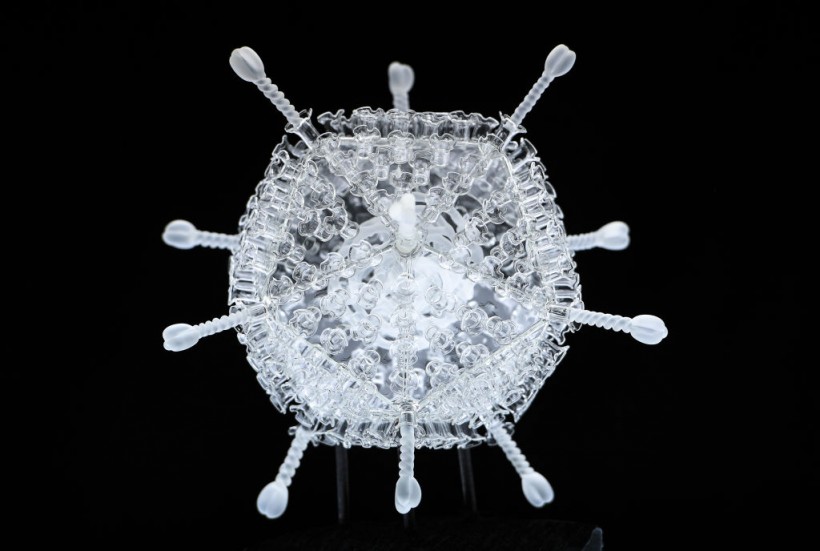Scholars from Georgia State University Institute for Biomedical Sciences developed a new COVID-19 vaccine through nanoparticles. This new vaccine is formulated with a couple of proteins that improve the response of the human body's natural immune system against the severe acute respiratory syndrome coronavirus 2 (SARS-CoV-2).
This new vaccine shows promising efficacy that could work against the deadly virus that caused the pandemic.
The Problem with COVID Vaccines

BRISTOL, UNITED KINGDOM - FEBRUARY 05: Artist Luke Jerram's glass sculpture of the Oxford-AstraZeneca coronavirus vaccine at the Paintworks on February 05, 2021, in Bristol, England. The sculpture, one million times larger than the actual vaccine nanoparticle, marks the ten-millionth vaccination to be administered in the UK. Five limited editions of the artwork will be sold, with all profits going to the global charity Médecins Sans Frontières to help communities heavily impacted by the pandemic. Testing positive for Covid-19 in November, Jerram says he is still feeling the effects of the virus. "When I created a sculpture of Covid-19 back in March, little did I know I would later be among those to contract the virus."
COVID-19 was responsible for over six million deaths in 2019 alone. In just a short period of time, this virus shattered the safety of public health globally. Despite the ease of COVID cases, scientists and international health organizations are still on high alert against the risks of multiple coronavirus mutations.
The COVID vaccines being used today for infected people were developed with the ability to deteriorate the spike proteins of the coronavirus. All the other treatments and neutralizers for the virus rely on targeting this feature. However, these vaccines could only cater to just a single variant, as each has a spike protein unique from others.
In the study, the experts utilized mice subjects to investigate the immune response induced by a couple of proteins, particularly the spike protein and the stem subunit (S2) of the spike protein, PhysOrg reports.
According to the findings, the combination of properties between these two proteins was discovered to improve their immunogenicity when the couple is modified into double-layered nanoparticle proteins.
Protein Nanoparticle Vaccines
Georgia State University's Center for Inflammation, Immunity & Infection specialist and lead author of the study, Baozhong Wang, explained that the entire S protein was already utilized in many studies as an antigen in the vaccines were relayed throughout the pandemic.
But despite the advancements, the populations affected by COVID infections continue to rise alongside the mutations of many variants, which to date have already exceeded the capacity of the ancestral virus, Wang continued.
Because of the problems posed by these changes, the protection and efficacy of each vaccine are also being endangered and pushed to be modified better than the previous treatments.
The experts utilized the stem of the SARS-CoV-2 proteins as it has a more conserved form and obtained fewer mutations between viral lineages. The stem could also trigger a better antibody neutralization and antibody-dependent cellular cytotoxicity or ADCC activities to combat the variants of S protein.
Wang said that promising results were observed over the utility of stabilized stem subunit for antigen on SARS-CoV-2 universal vaccines against the unusual and unpredictable variants.
In a closer look, stem immunization boosted the balance of immunoglobulin G (IgG) antibodies and the ADCC activity. The immune reaction was better when the double-layered protein nanoparticles were utilized instead of stem and spike proteins only.
The study was published in Small, titled "SARS-CoV-2 Spike Stem Protein Nanoparticles Elicited Broad ADCC and Robust Neutralization against Variants in Mice."
RELATED ARTICLE: Japan Develops Fluorine-Based Nanomembrane for Quick, Efficient Water Desalination
Check out more news and information on Nanotechnology in Science Times.














